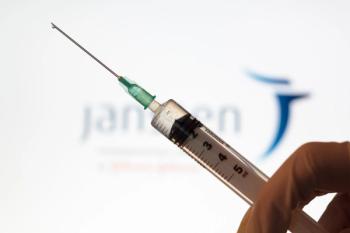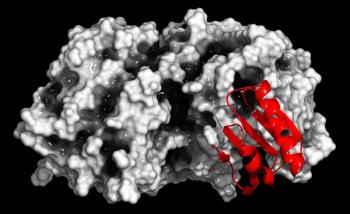
Pembrolizumab and Radiotherapy Treatment Shows Benefit in Patients With Relapsed/Refractory Multiple Myeloma
Radiotherapy may have applications beyond symptomatic relief when used in combination with immunotherapy.
Patients with relapsed or refractory (R/R) multiple myeloma (MM) responded positively to pembrolizumab (Keytruda; Merck) and low-dose, single-fraction radiotherapy (RT) in a small clinical study (NCT03267888). The combination proved to be a safe and efficacious treatment, demonstrating improved objective responses and immunological profiles in patients, and may offer further insights into overcoming resistance mechanisms in hematological malignancies.1
In treatment of MM, RT use has been limited to palliation of pain, impending fracture, and spinal cord compression control to manage and alleviate symptoms, highlighting its role in providing symptomatic relief and managing specific complications. However, preclinical studies in models of melanoma demonstrate that RT has the ability to enhance immune response when used with immune checkpoint inhibitors, such as pembrolizumab. The researchers theorized that application of this treatment may alter the tumor microenvironment and increase anticancer activity in MM.2-3
The prospective, single-center, single-group, open-label, phase 2 trial enrolled 25 patients to receive RT and pembrolizumab, of which 11 (44%) were female, 14 (56%) were male, 19 (76%) patients were White, and 6 (24%) were Black. On the first day of treatment, patients underwent hypofractionated 8 gray in 1 fraction (8 Gy/1 fx) radiotherapy, targeting either symptomatic or progressing extra-osseous or osseous myeloma sites. On day 2 or 3, 200 mg of pembrolizumab was administered through an IV, followed by subsequent doses every 3 weeks (±7 days) for up to 2 years or until progression of disease, unacceptable side effects, withdrawal of consent, loss to follow-up, or death.2-3
The researchers evaluated the efficacy and immunological effects of the combination treatment through several methods, including radiographic assessments, to evaluate changes in lesion size, and immunological assessments, which monitored changes in CD8+ and CD4+ T cells as potential biomarkers of treatment response. The primary end point was acute toxicity defined as grade 3 or worse at 3 months within the radiated site. Additional end points included objective response, defined as a change in lesion size, and abscopal response, which was characterized as radiographic improvement at a non-irradiated distant site.2-3
At the 3-month follow-up, 32% of patients had treatment benefit, of which 1 had stable disease, 3 had partial response, 2 had very good partial response, and 2 had complete response. As the primary outcome, toxicity was deemed acceptable with no grade 4 or 5 adverse events (AEs) observed, and radiation-related toxicity did not exceed grade 3. Additionally, only 1 patient had a grade 3 pembrolizumab-related AE and there were no treatment related deaths.2-3
Through exploratory analyses, the researchers investigated the association between proliferation of CD8+, CD4+, Foxp3, and clinical response. In 17 patients with T cell and clinical data, 71% had a proliferative CD8+ response and 53% had a proliferative CD4+ or Foxp3 response. Of the patients with T cell data, 7 had a clinical response, of which 6 of had better CD8+ response.2-3
Based on the data, the combination treatment of pemrolizumab and RT demonstrated meaningful clinical benefits for patients with R/R MM, indicating the potential use of RT outside of symptom management. The treatment proved to be well-tolerated and a safe alternative treatment for heavily pretreated patients, offering hope for new therapeutic strategies and expanded treatment options. The findings support further research into the role of RT in combination with immunotherapy treatments, leading to more personalized treatments for patients.
REFERENCES
- National Cancer Institute. Pembrolizumab and radiation therapy in patients with relapsed or refractory multiple myeloma. ClinicalTrials.gov identifier: NCT03267888. January 29, 2024. Accessed July 16, 2024.
https://clinicaltrials.gov/ct2/show/NCT03267888 . - Khan M, Nasti T, Qian J, et al. Pembrolizumab and low-dose, single-fraction radiotherapy for patients with relapsed or refractory multiple myeloma: a prospective, single-centre, single-group, open-label, phase 2 pilot trial in the USA. Lancet Haematol. May 23, 2024. doi:10.1016/S2352-3026(24)00105-4
- Refractory multiple myeloma responsive to immunotherapy plus low-dose radiotherapy. MedPage Today. July 10, 2024. Accessed July 16, 2024.
https://www.medpagetoday.com/hematologyoncology/myeloma/111042?xid=nl_mpt_morningbreak2024-07-11&mh=6d2b5f4f91352444bdf817a9c17750bc&utm_source=Sailthru&utm_medium=email&utm_campaign=MorningBreak_071124&utm_term=NL_Gen_Int_Daily_News_Update_active
Newsletter
Stay informed on drug updates, treatment guidelines, and pharmacy practice trends—subscribe to Pharmacy Times for weekly clinical insights.















































































































































































































